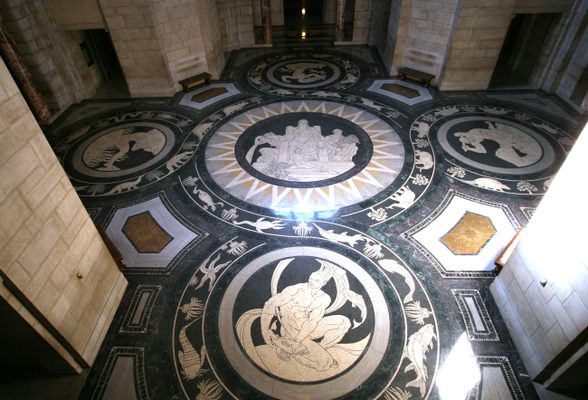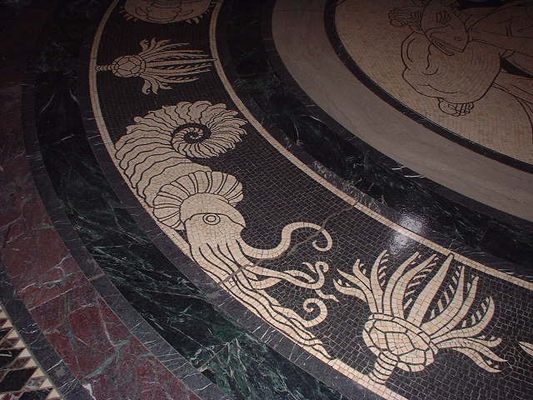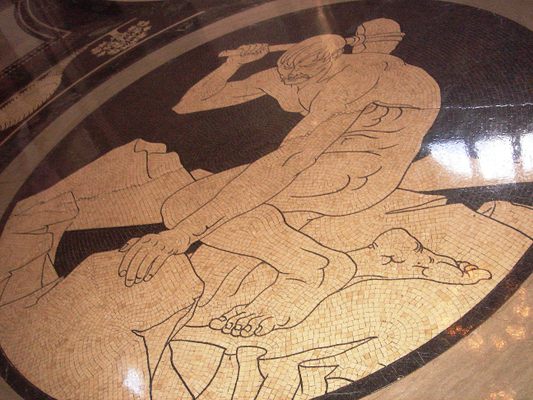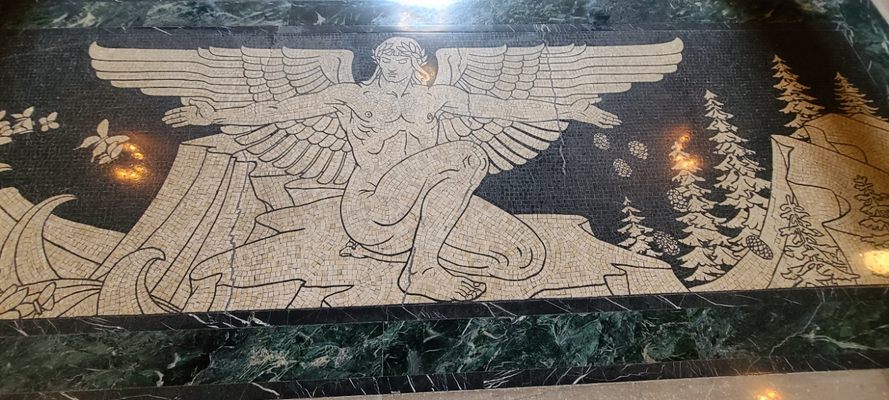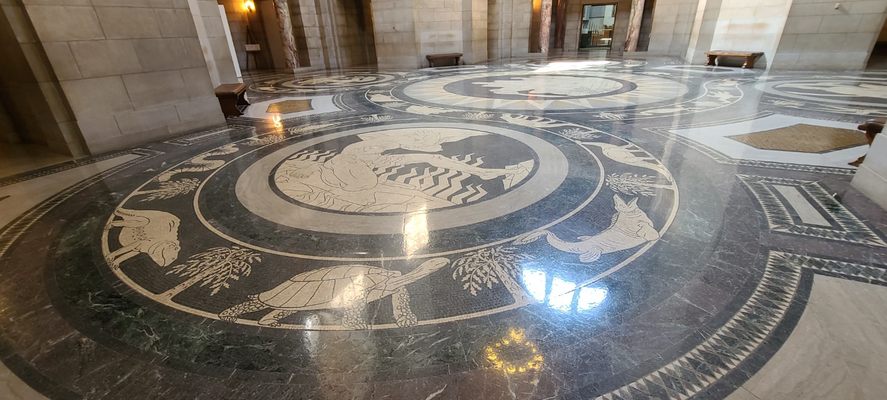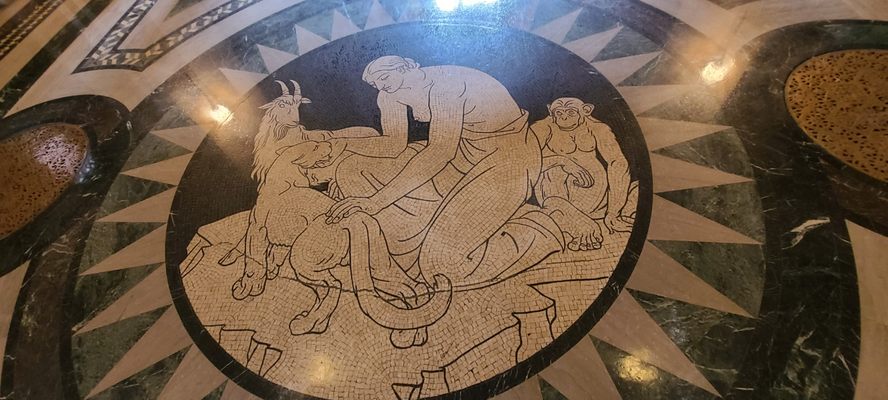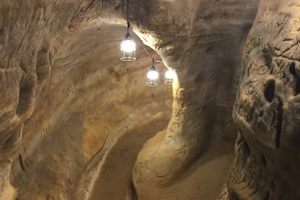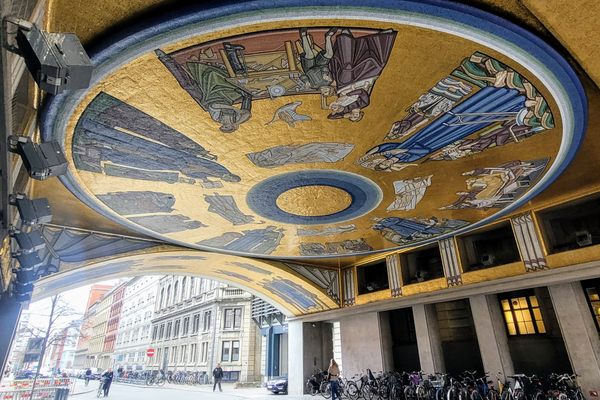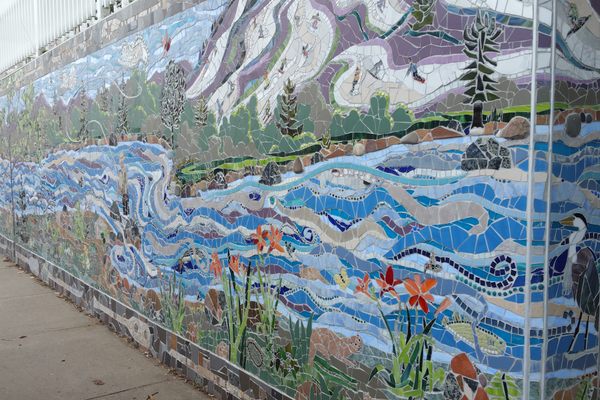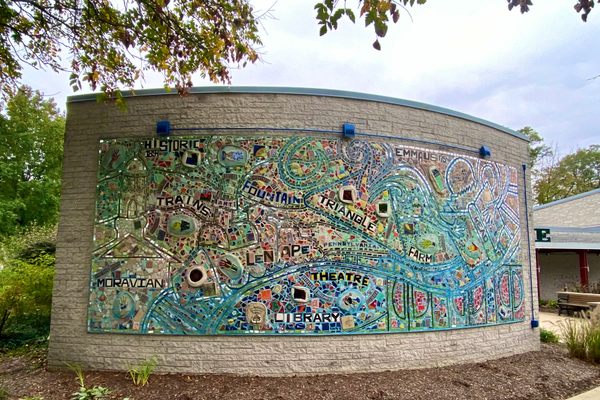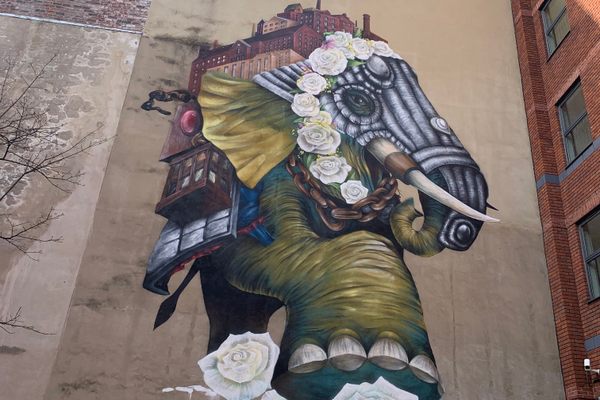About
The mosaic on the rotunda floor of the Nebraska State Capitol was designed to be an artistic reflection of life and its natural elements: water, fire, air, and earth. But what makes this work remarkable is that it doesn't just feature the elements normally associated with Nebraska, like prairie grasses or deer. Instead this mural was designed to represent life in the state as it looked at any point in its history.
That point could be when the building was erected in 1928, or millions of years ago in the Paleozoic Era. Which is why, in addition to butterflies and falcons, this mosaic features dinosaurs, an extinct giant tortoise, and a sabre-toothed tiger.
The animals and plants are arranged according to the four classical elements. The element of air is represented by birds and insects; water by fish and other sea animals; earth by various land animals; and fire by the dry desert conditions of the area 300 million years earlier.
Each of these plants and animals form a ring around a personified representation of the element. As for the dinosaurs, although Nebraska isn't known for its dinosaur fossils, by expanding the idea of Nebraska to mean the Nebraska Territory (which includes Utah, Wyoming, and the Dakotas), the piece was able to include, for example, four species of dinosaur and two long-extinct birds.
The artwork was designed by Hildreth Meière, a New York artist known for her glass and mosaic work, along with the building's architect and a professor at the University of Nebraska. And although this was a talented group of people, none of them were very familiar with natural history, so the team reached out to Erwin Hinckley Barbour, director of the University of Nebraska State Museum to provide sketches of extinct animals and plants for Meière to work from.
According to paleontologist Neale Monks, "Meiere and Alexander were adamant in their belief that the images in the mosaic needed to have scientific as well as artistic integrity." Using Barbour's sketches as a guide, Meière created large-scale drawings, keeping the scientific accuracy while adding her own, more stylized touches.
The rotunda floor mosaic, known as "Earth as the Life-giver," was just one of several pieces Meière completed in the capitol building. Her mural work can also be seen on ceilings and floors in the building's vestibule, foyer, and Senate Chamber, and the entrance doors to the House of Representatives.
Related Tags
Published
October 25, 2017
